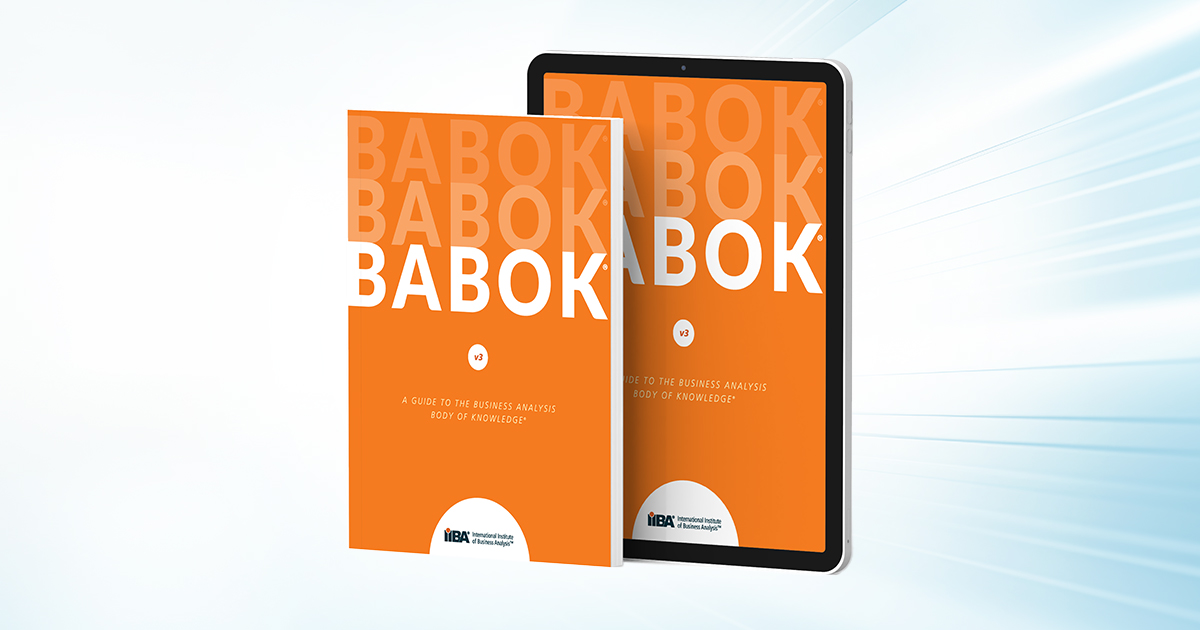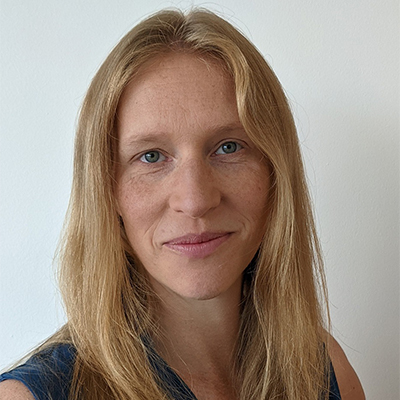Adapting Knowledge Areas to Elevate Your Business Analysis
Disclaimer: The views and opinions expressed in this article are those of the author and may not reflect the perspectives of IIBA.
Are you looking to breathe life back into your analysis approach? Are you starting in a new role and unsure how to approach things? Or perhaps you’ve been given the opportunity to share your knowledge across your team or organization?
If any of these scenarios sound familiar, you’re not alone. My Certified Business Analysis Professional (CBAP) designation from IIBA gave me the structure and confidence I needed in my role. It allowed me to make meaningful improvements across multiple projects in my role at a technology centre supporting innovative solutions and existing systems for a large insurance company. This certification has been instrumental in helping me excel, deliver exceptional value, and drive impactful business outcomes.
At the heart of the CBAP is A Guide to the Business Analysis Body of Knowledge (BABOK Guide). Its knowledge areas cover key aspects of business analysis and provide specific tasks for each. This blog shares real-world scenarios where I applied several of these knowledge areas, along with concepts and techniques, to structure my approach as a business analysis professional.
This not only elevated the quality of my work but also boosted my confidence. Through learning and certification, I was able to share my knowledge, support my colleagues, and further promote business analysis.
Enhancing Scrum Team Efficiency With Structured Requirements Analysis
During my time supporting a scrum team, I collaborated on analyzing requirements, writing user stories, and implementing technology changes. To ensure precision and quality, I followed the steps outlined in the Requirements Analysis and Design Definition knowledge area (Chapter 7), namely:
- Specify and model requirements
- Verify
- Validate
- Analyze value
These steps provided a structured approach that ensured thoroughness and accuracy in our requirements analysis.
Daily interactions and communications as a business analysis professional brought greater structure to how our requirements were analyzed. This approach led to fewer queries from the developers, as the requirements were clearly defined and understood. It also resulted in less rework on story content, as the initial user stories were comprehensive and well-documented.
Additionally, there were fewer defects during testing, as the requirements had been meticulously verified and validated before implementation. The BABOK Guide also allowed me to present a structured approach for defining our solution decision and design process. By having a clear guideline in place, we were able to allocate more time to explore and analyze initial requirements.
Learning a structured method around Requirements Life Cycle Management (Chapter 5) also helped the team tighten up our level of traceability. We became more adept at maintaining, prioritizing, and assessing changes, as well as approving a large volume of requirements spanning a two-year project. This improved traceability ensured that all requirements were consistently tracked and managed throughout the project lifecycle, reducing the risk of overlooked or mismanaged requirements.
Building Confidence and Unity in Business Analysis Through Resources and Certification
Receiving my certification and learning practical skills and techniques gave me the confidence to share my knowledge of business analysis—what it is and how to approach it—with larger groups in my department. I was able to demonstrate that business analysis was a part of many of our roles, not just those of business analysts. By using commonly accepted practices, we can approach business analysis in a more unified manner.
Topics like strategy analysis were key for a corporate section that explored and delivered new and emerging technologies. I was able to discuss with authority processes that focused on current state, future state, risk management, and change management. By helping the group understand activities and tasks within each knowledge area, such as completing gap assessments and risk assessments, I could then also recommend techniques and deliverables. Tools such as a SWOT analysis can help with decision-making, while outputs like a capability map assist with scope and onboarding.
I introduced a "business analysis playbook" to both established and new colleagues, guiding them on the principles of business analysis and best practices within our department. This allowed me to tie in corporate policies and practices with globally recognized resources and methods, ensuring an excellent foundation for our work while aligning with enterprise procedures.
Navigating New Challenges: Leveraging Business Analysis Planning and Monitoring for Success
When I moved into a new team as a principal business analyst, the Business Analysis Planning and Monitoring knowledge area (Chapter 3) became my grounding technique. This transition involved joining a bigger team, working on a larger platform, and facing much higher expectations.
I realized I needed to begin as I intended to proceed: with calm focus and a commitment to meeting these expectations. The guidelines provided in Business Analysis Planning and Monitoring were instrumental in helping me get settled and informed at an accelerated pace.
I began by utilizing the Business Analysis Core Concept Model canvas, which was crucial in ensuring I understood the mission and objectives of each project. This foundational step allowed me to grasp the bigger picture and align my efforts with the overarching goals of the team and the organization. It felt like going back to basics in a way, as I needed to answer fundamental questions:
- Who were my stakeholders?
- What was expected of me?
- What systems were in place?
- What had already been accomplished?
- What were the new deliverables?
Working through the practices outlined in the BABOK Guide supported me through this steep learning curve. Its structured approach helped me systematically address each aspect of my new role. By following these practices, I was able to quickly identify key stakeholders, understand their needs and expectations, and establish effective communication channels.
Additionally, I could assess existing systems and processes, identify gaps, and plan for new deliverables. This methodical approach ensured that I could focus on my deliverables more efficiently. It provided a clear roadmap for navigating the complexities of my new role and allowed me to build a strong foundation for future success.
There’s No One-Size-Fits-All Approach
I refer to the BABOK Guide regularly (yes, I have an adapted version stuck on my wall in my home office!) as a constant reminder of how to keep excelling and offering the best in my work. Sometimes, when faced with a new challenge or situation, I’m prompted to apply a new concept or technique that it suggests. It's a versatile resource that helps me stay on top of my game!
It's important to remember that no single technique fits all scenarios. You need to take what works best for you, your role, your project, and your company. The key is to intertwine the practices with your company's policies and procedures to create a cohesive approach.
In our digital organization, we use a digital product lifecycle approach, which integrates seamlessly with the knowledge areas. This ensures that our enterprise approach to creating and implementing digital products is built on a strong foundation of business analysis throughout the entire process. By doing so, we can ensure that our digital products are not only innovative but also aligned with our business goals and strategies.
IBA’s KnowledgeHub is your go-to resource for actionable "how-to" content, globally recognized standards (like the BABOK Guide), and practical tools for business analysis success. Start your FREE 7-day trial today.
About the Author

Sheaffe Monteith has nearly 25 years of corporate experience, with almost 15 years dedicated to the field of business analysis. She has honed her expertise in requirements analysis and design definition across diverse industries, including renewable energy, food manufacturing, and health insurance. Currently, she is a valued member of a solutions architecture team. Throughout her career, Sheaffe has been recognized with company awards for her outstanding contributions to the areas she has worked in.


